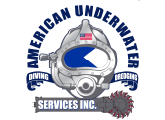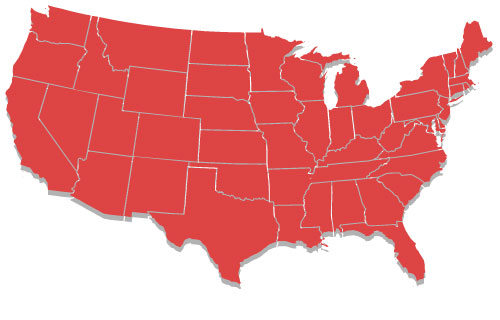Golf course ponds are much more than bodies of water designed to make the course look pretty. They serve as a technical hazard that causes a standard par three to become a par five (or greater) hole.
For some courses, they also act as irrigation water retention systems which can save hundreds of thousands of dollars over the course of a single year.
But like all man-made things in life, golf course ponds suffer wear and tear. From the moment they were created, Mother Nature has been steadily trying to reclaim the water and turn it into a dry meadow. Through natural forces, and over a period of time, unmaintained golf course ponds will go from natural-looking waterway to smelly, unsightly swamp.
If you’ve been tasked with maintaining the ponds for your golf course, we’re going to give you a few tips on how you can maintain them without going over budget and with as little manpower as possible.
Nutrient Management
As ponds and other man-made water structures age, they start to collect nutrients from organic matter such as dead leaves and other plant and animal life. These nutrients sink to the bottom of the pond where the beneficial bacteria cannot live.
Over time, the nutrient levels of the ponds will spike out of control and cause massive, unsightly, and even potentially hazardous algae blooms to form. This not only detracts from the beauty of the golf course, but it can also clog intake pipes for those courses that use their ponds to retain irrigation water.
There are chemicals that you can buy that will temporarily solve the nutrient problem. Most often they are applied in the springtime, well in advance of the hot summer months in which the strong sunlight can contribute to nuisance algae blooms.
Aeration
Aerators are used to help curtail algae blooms. Well-aerated water provides oxygen to the beneficial bacteria which help limit nuisance plant and algae growth. It also provides an aesthetic benefit to the pond as flowing water has a calming effect upon people.
If your aeration system isn’t working, or it’s running at a very low speed, it will need to be maintained. Sometimes the machinery that runs the aeration system needs servicing or replacement. Other times there could be a blockage in the intake system.
Hiring a professional to clean out the blockage will only temporarily solve the problem. If the pond has that much sludge and much you’re going to be fighting an uphill battle trying to keep your water intake lines clear and free from the mud and muck.
Plant Life
Another thing to keep in mind is that not all animal and plant life is beneficial to a pond. There are several species of nuisance weeds and plant life that can not only pollute the pond but cause it to look unsightly as well. They are often referred to as “invasive species” and can multiply out of control.
Books can be bought, or experts can be brought in to consult and identify which plants can stay and which need to be removed. Curtailing nuisance weed and plant growth can be done by chemicals, but it’s a never-ending battle. A far superior method is to cut down the number of nutrients the pond is receiving, and by that, you’re going to need to call in a dredge.
Pond Dredging
Organic sediment that makes its way to the bottom of a pond over time releases nutrients that nuisance algae and plant life thrive on. Chemicals alone cannot and will not fix the problem. If you regularly treat your pond with chemicals, you’re spending way more money than you should.
Having a professional pond dredging company come in and remove the nutrient-rich sediment from the bottom of the pond is the best way to combat algae and nuisance plant blooms. It can also lower or completely negate the need to add expensive chemicals to the water every few weeks.
The initial upfront cost may seem like a lot, but compared to the lowered property values that ugly ponds bring, the ongoing cost of chemical treatment, as well as the man-hours needed to maintain the pond, dredging a pond can save a golf course tens of thousands of dollars every year.
Golf Course Pond Dredging Experts
At American Underwater Services, we have over 20 years of hands-on experience in helping golf courses dredge and maintain their ponds. Give us a call today at (817) 377-8512 to learn more about how we can help solve your algae/nuisance weed problem and make your golf course ponds healthy again.
[author_box]
Nutrient Management
Nutrient management is the science and practice directed to link soil, crop, weather, and hydrologic factors with cultural, irrigation, and soil and water conservation practices to achieve optimal nutrient use efficiency, crop yields, crop quality, and economic returns, while reducing off-site transport of nutrients (fertilizer) that may impact the environment. It involves matching a specific field soil, climate, and crop management conditions to rate, source, timing, and place (commonly known as the 4R nutrient stewardship) of nutrient application.
Aeration
Aeration (also called aerification or aeriation) is the process by which air is circulated through, mixed with or dissolved in a liquid or substance.
Aeration of liquids (usually water) is achieved by:
- passing the liquid through air by means of fountains, cascades, paddle-wheels or cones.
- passing air through the liquid by means of the Venturi tube, aeration turbines or compressed air which can be combined with diffuser(s) air stone(s), as well as fine bubble diffusers, coarse bubble diffusers or linear aeration tubing. Ceramics are suitable for this purpose, often involving dispersion of fine air or gas bubbles through the porous ceramic into a liquid. The smaller the bubbles, the more gas is exposed to the liquid increasing the gas transfer efficiency. Diffusers or spargers can also be designed into the system to cause turbulence or mixing if desired.
Porous ceramic diffusers are made by fusing aluminum oxide grains using porcelain bonds to form a strong, uniformly porous and homogeneous structure. The naturally hydrophilic material is easily wetted resulting in the production of fine, uniform bubbles.
On a given volume of air or liquid, the surface area changes proportionally with drop or bubble size, the very surface area where exchange can occur. Utilizing extremely small bubbles or drops increases the rate of gas transfer (aeration) due to the higher contact surface area. The pores which these bubbles pass through are generally micrometre-size.
Uses of aeration of liquids:
- Pond aeration.
- To smooth (laminate) the flow of tap water at the faucet.
- Production of aerated water or cola for drinking purposes.
- Secondary treatment of sewage or industrial wastewater through use of aerating mixers/diffusers.
- To increase the oxygen content of water used to house animals, such as aquarium fish or fish farm
- To increase oxygen content of wort (unfermented beer) or must (unfermented wine) to allow yeast to propagate and begin fermentation.
- To dispel other dissolved gases such as carbon dioxide or chlorine.
- In chemistry, to oxidise a compound dissolved or suspended in water.
- To induce mixing of a body of otherwise still water.
Plant Life
Plant life-form schemes constitute a way of classifying plants alternatively to the ordinary species-genus-family scientific classification. In colloquial speech, plants may be classified as trees, shrubs, herbs (forbs and graminoids), etc. The scientific use of life-form schemes emphasizes plant function in the ecosystem and that the same function or “adaptedness” to the environment may be achieved in a number of ways, i.e. plant species that are closely related phylogenetically may have widely different life-form, for example Adoxa and Sambucus are from the same family, but the former is a small herbaceous plant and the latter is a shrub or tree. Conversely, unrelated species may share a life-form through convergent evolution.
While taxonomic classification is concerned with the production of natural classifications (being natural understood either in philosophical basis for pre-evolutionary thinking, or phylogenetically as non-polyphyletic), plant-life form classifications uses other criteria than naturalness, like morphology, physiology and ecology.
Dredging
Dredging is the operation of removing material from one part of the water environment and relocating it to another. In all but a few situations the excavation is undertaken by specialist floating plant, known as a dredger. Dredging is carried out in many different locations and for many different purposes, but the main objectives are usually to recover material that has some value or use, or to create a greater depth of water.


